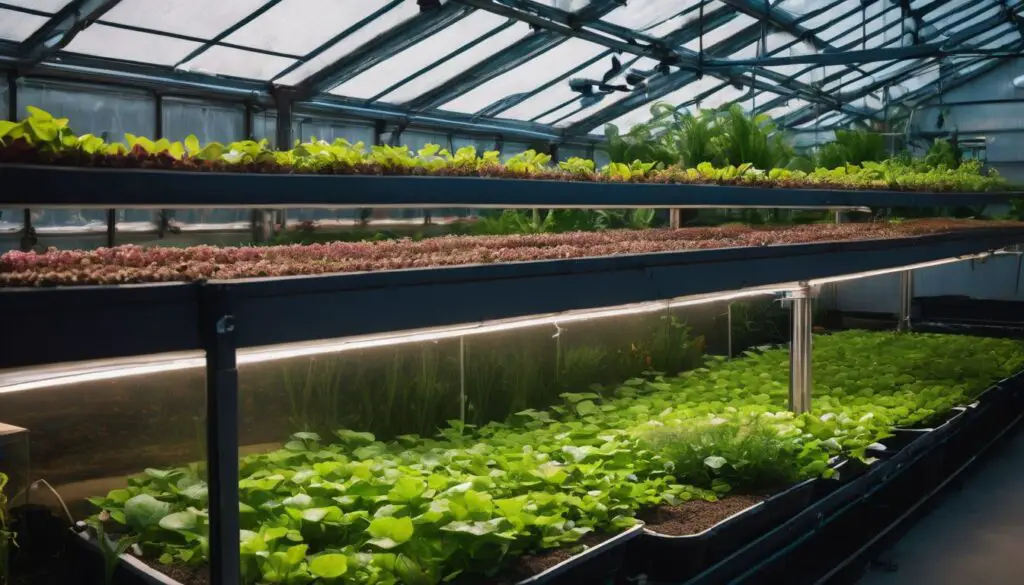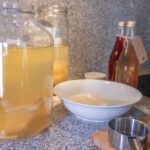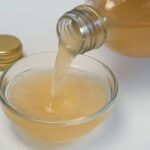Can you do aquaponics with salt water? Surprisingly, not only is it feasible, but it can also be advantageous in certain scenarios. This article explores the viability of saltwater aquaponics, discussing suitable plant and fish options, strategies for managing salinity, and the potential benefits and challenges. It delves into the innovative concept of combining marine environments with gardening, offering a fascinating perspective on merging oceanic elements with horticulture.
Yes, you can use salt water for aquaponics, and it even has certain advantages such as allowing for a wider variety of crops and marine species. Some vegetables like beets and kale can tolerate salt and grow well in these systems. However, managing salinity levels is crucial for the system’s success.
Stick around to explore this exciting intersection where ocean meets garden!
Key Takeaways
- Aquaponics can be done with salt water, and it has its advantages in certain situations.
- Certain vegetables like beets, kale, Swiss chard, celery, and spinach can tolerate salt and grow well in a saltwater aquaponics system.
- Marine aquaponics systems use saltwater instead of freshwater for fish farming and plant cultivation, opening up possibilities for growing marine species and vegetables that tolerate higher salinity levels.
- Saline aquaponics is a promising approach that combines plant cultivation and fish rearing using saltwater systems. It allows plants and fish to thrive in high salinity environments by selecting suitable plants and implementing proper salinity management techniques.
The Feasibility of Aquaponics with Saltwater
Vegetables that tolerate salt and marine aquaponics systems offer potential for exploring the feasibility of aquaponics with saltwater.
Vegetables that tolerate salt
There are certain vegetables that can grow in salt water. These plants are tough and can take up salt from the water. They don’t mind a little salt in their life. Some of these vegetables include:
- Beets – These red root veggies like it salty.
- Kale – This leafy green is not scared of salt.
- Swiss Chard – Like kale, Swiss chard stands up to salt.
- Celery – It does well in salty conditions.
- Spinach – This veggie can handle some salt too.
Marine aquaponics systems
Aquaponics systems can also be set up using saltwater, not just freshwater. This means you can combine fish farming with growing plants in a marine environment. Instead of using traditional aquaponics methods, which rely on freshwater sources, marine aquaponics uses saltwater.
It opens up possibilities for vegetable cultivation that tolerate higher salinity levels and the use of marine species like marine asparagus. These systems are designed to manage the interference caused by salt and maintain water quality for both fish and plants.
By creating specialized marine aquaponic systems, it is possible to achieve sustainable food production while utilizing renewable resources from the ocean.
Saline aquaponics as a potential approach
Saline aquaponics is a promising approach that combines plant cultivation and fish rearing using saltwater systems. With this method, plants and fish can thrive in an environment with high salinity levels.
By selecting salt-tolerant plants like marine asparagus and implementing proper salinity management techniques, it is possible to create a successful saline aquaponics setup. This approach offers the potential for sustainable food production and increased crop variety while overcoming the challenges of salt interference.
Innovative aquaponics systems are being developed, making saline aquaponics a viable option for those interested in fish and vegetable farming with saltwater.
Benefits and Challenges of Saltwater Aquaponics
Saltwater aquaponics offers numerous benefits, such as sustainable food production and increased crop variety. However, it also presents challenges in managing salinity levels and ensuring water quality for both fish and plants.
Sustainable food production
Aquaponics with saltwater systems has the potential to contribute to sustainable food production. By combining fish rearing and plant cultivation, aquaponics reduces the need for external fertilizers and water inputs.
This closed-loop system allows for the efficient use of resources, making it an environmentally friendly method of growing food. Additionally, saltwater aquaponics offers increased crop variety, as there are vegetables that can tolerate salt levels in their growth medium.
Implementing proper salinity management techniques is crucial for successful production in this system. Overall, saltwater aquaponics presents a promising approach for sustainable food production by utilizing natural processes and minimizing environmental impact.
Increased crop variety
Aquaponics with saltwater can provide a way to grow a wider variety of crops. Unlike traditional aquaponics systems that use freshwater, saltwater aquaponics allows for the cultivation of plants that are more tolerant to saline conditions.
By incorporating halophytes, or salt-tolerant plants, into the system, farmers can expand their crop options beyond typical freshwater varieties. Some examples of these salt-loving plants include marine asparagus and sea purslane.
This increased crop variety in saltwater aquaponics opens up new possibilities for sustainable food production and diversification in aquaculture systems.
Salinity management
Salinity management is an important aspect of saltwater aquaponics. Since saltwater has higher levels of salinity compared to freshwater, it is crucial to maintain the right balance for both the plants and the fish.
The salinity level should be suitable for the specific types of vegetables and fish being cultivated in the system. Monitoring water quality regularly is necessary to ensure that it remains within optimal ranges.
To manage salinity effectively, growers can dilute the saltwater with fresh water or use a recirculating aquaponics system where water from the fish tank is continuously filtered and reused.
Another approach is saline aquaponics, which focuses on growing halophytes – plants that are naturally tolerant to high salinity levels.
By carefully managing salinity levels, growers can create a balanced ecosystem that promotes healthy plant growth while providing suitable conditions for their aquatic counterparts.
Successful Examples of Saltwater Aquaponics
Discover how innovative aquaponics systems are successfully integrating saltwater sources to produce an abundance of fish and vegetables worth their salt.
Aquaponic fish and veggies worth their salt
Aquaponics with saltwater can support the growth of certain kinds of fish and vegetables. Some examples include:
- Marine asparagus: This plant species is well-suited for aquaponics systems with salt water. It can tolerate higher salinity levels and produce edible shoots.
- Halophytes: These are salt-tolerant plants that can thrive in saline aquaponics environments. Some examples include sea purslane, samphire, and glasswort.
- Fish species: Certain types of fish can also adapt to saltwater aquaponics systems. Examples include barramundi, tilapia, and red drum.
- Innovative systems: Some aquaponics enthusiasts have successfully integrated saltwater sources into their setups. They use techniques like diluting the saltwater or fully recycling the system water to maintain the necessary salinity levels.
- Salinity management: Proper monitoring and management of water quality are crucial for successful saltwater aquaponics. It’s important to regularly test and adjust salinity levels to ensure optimal conditions for both fish and plants.
Innovative aquaponics systems
Aquaponics has seen the development of innovative systems that use saltwater. These systems have shown promise in combining fish rearing and plant cultivation in a sustainable manner. Some examples include:
- Recirculating Aquaponic Systems: These systems are designed to filter and recirculate water, reducing waste and conserving resources. They can be adapted to use saltwater, providing an efficient way to grow fish and vegetables together.
- Greenhouse Aquaponics: The use of greenhouses helps create a controlled environment for aquaponics, including those using saltwater. This allows for year-round production and protection against external factors such as extreme temperatures or pests.
- Diluted Saltwater Systems: By diluting saltwater with freshwater, it is possible to create a balance that supports both fish and plant growth. This approach opens up opportunities for utilizing saline water sources in regions where freshwater availability is limited.
- Fully-Recycled Systems: Some innovative aquaponics systems aim to achieve complete water recycling, minimizing the need for fresh inputs and creating a self-sustaining ecosystem within the system.
Potential plant species for saltwater aquaponics
Here are some potential plant species that can be grown in saltwater aquaponics:
- Marine asparagus
- Sea purslane
- Samphire
- Sea kale
- Salicornia
Considerations for Implementing Saltwater Aquaponics
Consider the salinity requirements of different plant species and fish, as well as the importance of water quality monitoring and management in a saltwater aquaponics system.
Salinity requirements for different plants and fish
Different plants and fish species have varying salinity requirements, which means they thrive at different salt concentrations. This makes selecting the right combination for a saltwater aquaponic system crucial. Here’s a brief overview of some plants and fish and their salinity requirements.
| Plant/Fish | Salinity Requirement |
|---|---|
| Lettuce | Low salinity (0-5 ppt) |
| Tomatoes | Moderate salinity (5-10 ppt) |
| Cucumbers | Moderate salinity (5-10 ppt) |
| Spinach | High salinity (15-20 ppt) |
| Tilapia | Low to moderate salinity (0-10 ppt) |
| Barramundi | Moderate to high salinity (10-30 ppt) |
| Shrimp | High salinity (20-35 ppt) |
It’s essential to keep in mind that these tolerances can vary depending on the specific variety and local conditions. Furthermore, adjustments may need to be done to the water quality parameters to maintain the health of both plants and fish in the aquaponics system.
Water quality monitoring and management
Monitoring and managing water quality is crucial in saltwater aquaponics. Regular testing of the various parameters such as pH, salinity levels, ammonia, nitrite, and nitrate concentrations helps ensure a healthy environment for both the fish and plants.
Maintaining appropriate levels can be achieved through adjusting feeding rates, water flow rates, and using biological filtration systems. Additionally, monitoring dissolved oxygen levels is important to prevent potential fish stress or suffocation.
By closely monitoring the water quality parameters and making necessary adjustments, you can create an optimal growing environment for your saltwater aquaponic system.
Integration of saltwater sources
You can integrate saltwater sources into a saltwater aquaponics system by using diluted saltwater or fully recycled water. One approach is saline aquaponics, which utilizes halophytes (salt-tolerant plants) and marine asparagus to grow vegetables in a greenhouse environment.
Another option is to combine fish tanks from saltwater aquaculture with recirculating aquaponics systems for both fish and vegetable farming. Managing salinity levels and monitoring water quality are important considerations when integrating saltwater sources into an aquaponics system.
Conclusion
Yes, you can do aquaponics with saltwater! It’s a great way to grow plants and raise fish together. By using salt-tolerant vegetables and marine systems, you can create an environmentally friendly and sustainable setup.
Although there are some challenges, the benefits of producing food in a saltwater environment make it worth exploring further. So go ahead and dive into the world of saltwater aquaponics!
FAQs
1. Can I use salt water for aquaponics?
No, salt water cannot be used for aquaponics as it can harm the plants and fish in the system.
2. Why is salt water not suitable for aquaponics?
Salt water contains high levels of salts that can be toxic to both plants and fish, leading to poor growth and health.
3. What type of water should I use for aquaponics?
Freshwater is the best type of water to use for aquaponics as it provides a balanced environment for plants and fish to thrive.
4. Are there any alternatives to using salt water in aquaponics?
Yes, you can use a mix of fresh and nutrient-rich rainwater or filtered tap water with appropriate pH levels instead of using salt water in an aquaponic system.

As a dedicated mother and passionate software developer, she weaves her diverse experiences into captivating stories that inspire and engage readers. Emma's love for sustainable living and environmental consciousness permeates both her personal and professional life. When she's not immersed in the world of coding and software development, Emma can be found nurturing her family and tending to her thriving organic garden. Her commitment to sustainable practices extends to every aspect of her life, from repurposing household items to embracing eco-friendly technologies.










